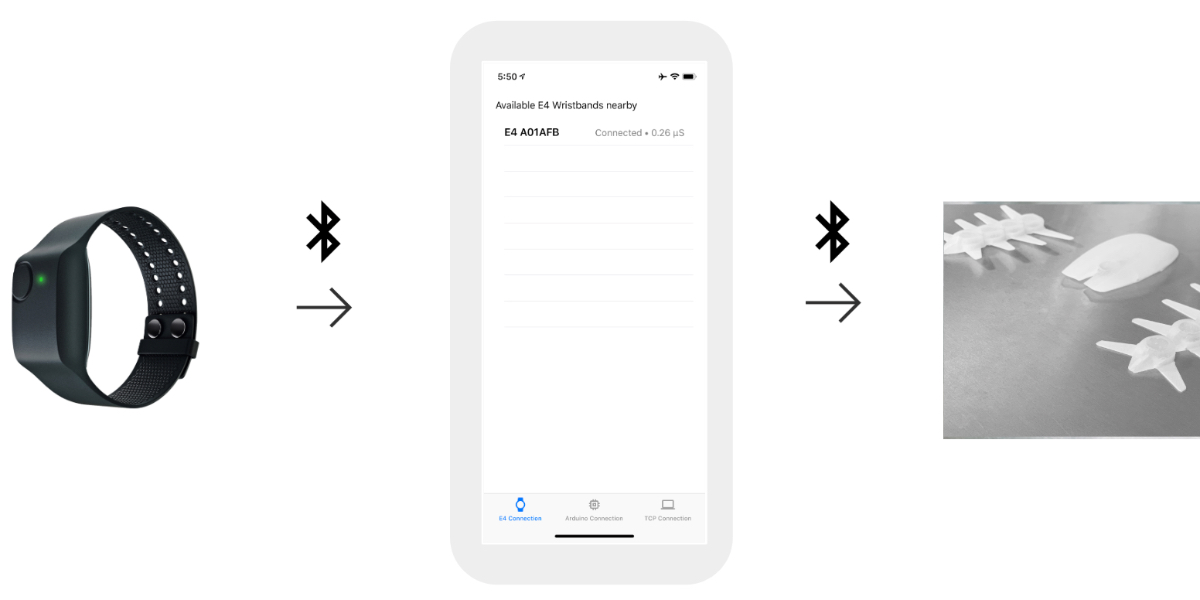AWARD YEAR
2023
CATEGORY
Body
GOALS
Good Health & Well-being, Balance Human & Artificial Intelligence
KEYWORDS
biofeedback, user interface, emotional intelligence, mental health, natural design
COUNTRY
United States of America
DESIGNED BY
Nava Haghighi
WEBSITE
https://navahaghighi.com/Self-interfaces
Self-Interfaces
Self- Interfaces Utilises Real-Time Biofeedback to Elicit Unconscious Behaviour Change in the Wearer
How does it work?
Self- Interfaces uses EDA Technology.
The Electrodermal Activity (EDA) Self-Interface is an interface for communicating certain relevant changes in the EDA.
EDA is a measurement of skin conductance, which is an indicator of sympathetic activity and is known to correlate with high and low arousal affective states.
The EDA signal is an interoceptive physiological signal and as such, most people are not aware of the changes in their EDA on a regular basis.
The human heartbeat is a good example of an intuitive and relevant haptic biofeedback; does not distract and is only felt when the heart beats fast.
Why is it needed?
Due to the correlation of EDA with changes in emotional state, interest, or attention, an awareness of one’s EDA can give additional insight into the perceived physical, emotional, and mental state of a person, and therefore has the potential to influence behavior.
How does it improve life?
The interfaces intuitively communicate relevant unconscious physiological signals through biofeedback to give the user insight into their behaviour and assist them in creating behaviour change. This allows us to monitor whether the user can develop an intuitive awareness of their EDA over time when the device is removed.
If we want to have a symbiotic relationship with the world around us, maybe a good place to start is by having interfaces that are not simply soul-less inanimate objects. Interfaces that can facilitate an emotional connection between them and their user. Or even interfaces that amplify the life in the environment around us to make us more aware and to generate empathy and care towards this life.







